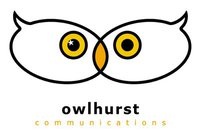 As part of The Publisher Research Council’s (PRC) ongoing research into reading behaviour, the habits of those with the greatest amount of disposable income have been analysed, revealing a lucrative and engaged advertising target market.
As part of The Publisher Research Council’s (PRC) ongoing research into reading behaviour, the habits of those with the greatest amount of disposable income have been analysed, revealing a lucrative and engaged advertising target market.
“The PRC, as a JIC (Joint Industry Council), assists marketers and media planners when it comes to day to day planning,” says Peter Langschmidt, consultant to the PRC. “Additionally, we provide ongoing research into the reading habits of consumers and continually demonstrate the power of adding print to media schedules.”
Print provides a depth that is extremely difficult to replicate on other media platforms. In the research conducted by research company whyfive and premium annual landscape survey, BrandMapp, the PRC provides insights into those at the top end of the SEM scale.
BrandMapp looks at 25 599 economically active adults who live in households earning in excess of R25 000 per month. In short, it paints a unique picture of economically active South Africans.
According to the research, 58% prefer reading, ranking it third above popular activities like travelling, gardening, eating out and socialising.
An interesting fact is that the percentage of wealthy South Africans who buy and read magazines have not changed noticeably over the past three years. While there was a slight dip in 2015, 66% of the BrandMapp sample buy magazines and 80% read. Due to the nature of magazines, additional reach is achieved as 86% of readers pass along their magazines to friends and family. An attribute respondents most associate with magazines is the ability to ‘pick up and dip in’ multiple times while 76% of magazine readers associate magazine adverts as being a direct trigger to purchase.
76% of wealthy South Africans still read printed newspapers. One person in four likes the ritual of a printed newspaper and 21% like the ‘touch and feel’ of real paper between their fingers.
Advertisers are benefiting through average read frequencies of magazines! An interesting question is asked of the respondents – when it comes to reading the following types of magazines, roughly how many times do you pick up and read/page through a single copy? Read frequencies ranged from 3.2 to 1.9, showing that advertisers get an average additional two OTS (Opportunity to See), ie buy one OTS and get one or two free while advertisers in newspapers receive an additional one OTS.
“Reading media, whether newspapers, magazines or online provides a depth of information unlike other media. The ability to put it down, pick it up and assimilate information at your own pace is an oft overlooked fact,” concludes Langschmidt. “Reading provides consumers with convincing information, prices and comparisons, calculators and location to make, and seal a purchase decision.”
For additional information and research on reading and the full READ presentation, visit www.prc.za.com.
Follow the PRC on
https://www.facebook.com/PublisherResearchCouncil
https://www.linkedin.com/company-beta/18100063

